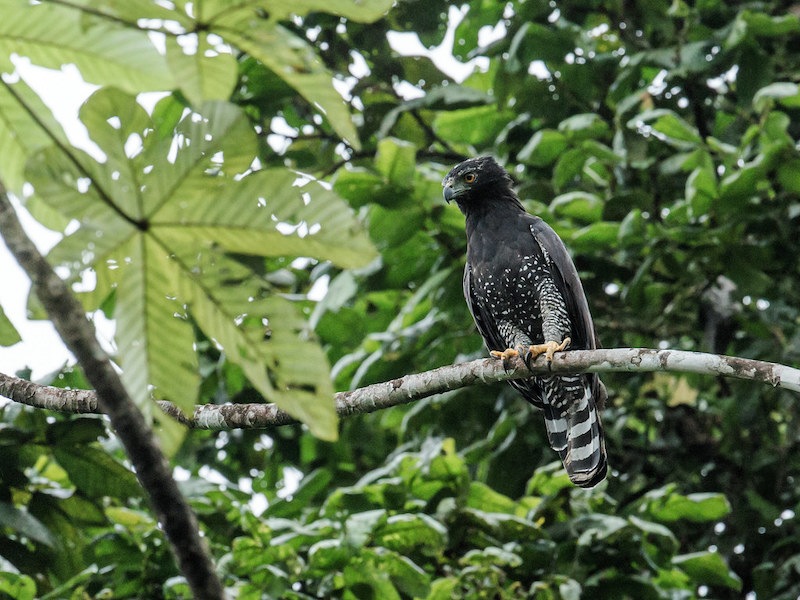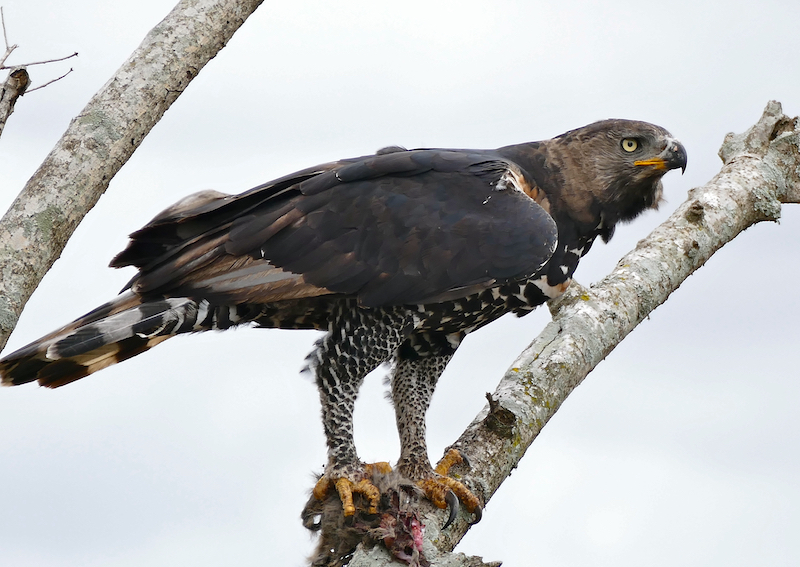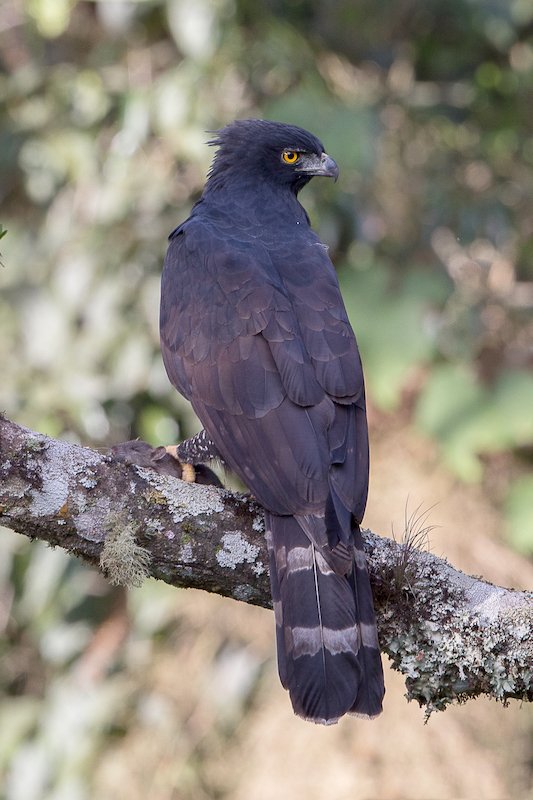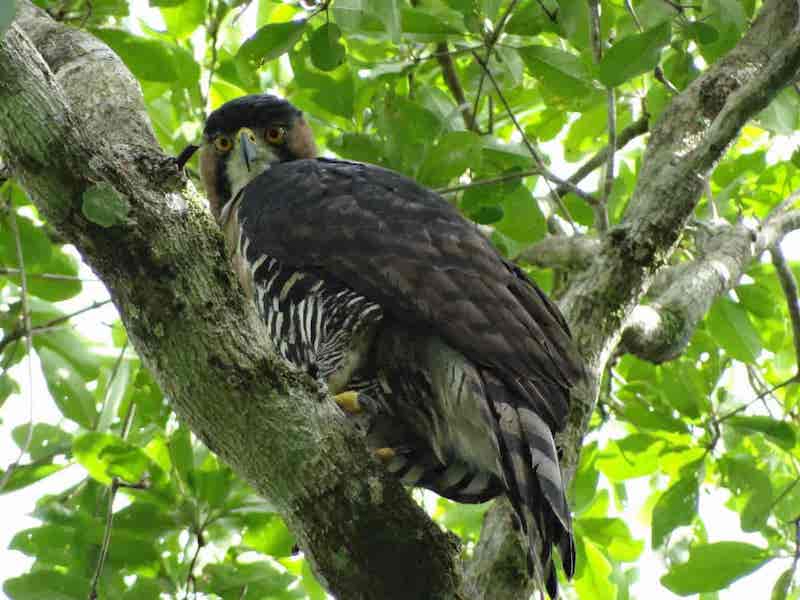Bird of the week.
Black Hawk-Eagle ( Spizaetus tyrannus)

Length: 55-70 cm
Wingspan: 110-135 cm
Weight: 900 – 1300 gr
IDENTIFICATION SUMMARY.
Medium-sized black forest eagle with cowl-like crest and feathered tarsi. Typical hawk-eagle with short, broad, paddle-shaped wings, feathered tarsi, and long tail. Adults are mostly black, second-plumage eagles are adult-like, but with more white, and juveniles are paler. Wingtips barely extend beyond folded secondaries on perched eagles.
TAXONOMY AND GEOGRAPHIC VARIATION: S. t. serus occur throughout Mexico and Central America, with no geographic variations.

SIMILAR SPECIES:
Hook-billed Kitedark morph is similar. They are smaller, larger-beaked, and shorter-tailed, and have more paddle-shaped and darker wings that are less heavily marked and shorter bare tarsi.
The crested Eagle dark morph is somewhat similar. But there is only one record of this morph in our area.
STATUS AND DISTRIBUTION:
Black Hawk-Eagles are rare to uncommon local residents on the Caribbean slope in lowland and foothill areas from s Mexico including the Yucatán Peninsula, to Pan-ama, and rare on the Pacific slope of s Mexico, and uncommon to fairly common residents on both slopes from s Nicaragua to Panama.
HABITAT:

Occurs in heavily and lightly forested areas, including second-growth, in lowlands, foothills, and lower mountains.
BEHAVIOR:
Black Hawk Eagles are still hunters, pursuing prey inside the forest from perches They make short stoops from perches but also tail-chase escaping prey. They prey primarily on arboreal mammals and birds, but they also take large lizards and snakes.
They soar and glide with wings held level. Powered flight is with strong, quick wing beats. Display flights include high-altitude mutual soaring, undulating flight, and wing fluttering, often accompanied by vocalizations. They soar frequently, most often in the late morning.
Large stick nests are built high in tall trees in forests.
MOLT:
Not studied. Presumably, they do not molt all of their remiges annually, resulting in primary wave molt. Apparently, all remiges are replaced annually. Juveniles begin to molt into Basic II (second) plumage when about nine months of age.
DESCRIPTION:
Black typical hawk-eagle, with a short, cowl-like crest and completely feathered tarsi. Sexes are alike in plumage, with females larger. Juvenile plumage differs, but Basic II (second) plumage is adult-like. Lores are gray, and the cere is dull pale yellow to gray. Adult.
Overall black, with white in raised cowl, white barring on upper-tail coverts, leg feathers, and under-tail coverts, narrowly and boldly barred black remiges, and a long tail with black and mottled gray bands of equal width. Eyes are orangish. The juvenile Brownish head shows bold white superciliaries, darker auriculars, and a white throat. White extends onto the center of the breast, which is otherwise narrowly streaked dark brown. The whitish belly is boldly barred dark brown and black.
Whitish leg feathers and under tail coverts are narrowly barred dark brown. Dark brown upper parts show narrow pale feather edges. The long tail shows dark brown and pale grayish tail bands of equal width.
Their eyes are yellow. Basic II (second plumage). Second-plumage eagles are adult-like, but with retained whitish areas on the head and belly.
UNUSUAL PLUMAGES:

No unusual plumages have been described.
HYBRIDS:
No hybrids have been reported.
ETYMOLOGY:
Spizaetus is from the Greek spizias, «hawk,» and aetos,
«eagle.» The species name, tyrannus, is from the Latin tyrannus, tyrant,» for its belligerent and dominant behavior.
Reference: Raptors of Mexico and Central America
By William S. Clark, N. John Schmitt
